McEllhiney Lecturer Gives Insights to Water Well Industry
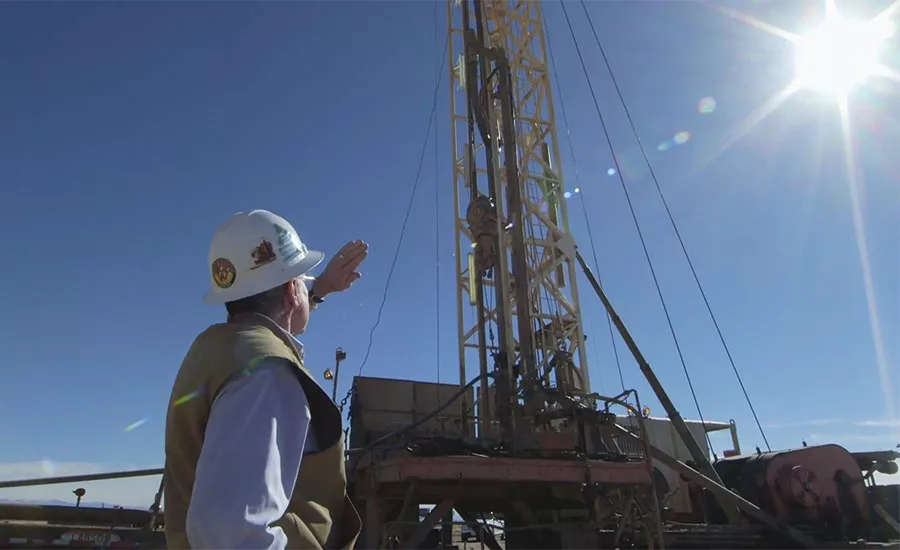
Gary L. Hix, CWD/Pl, RG, CPG, and this year’s McEllhiney Lecturer, is a veteran driller and pump installer. He works now as a consultant on industry standards and procedures.
Source: Gary L. Hix photos
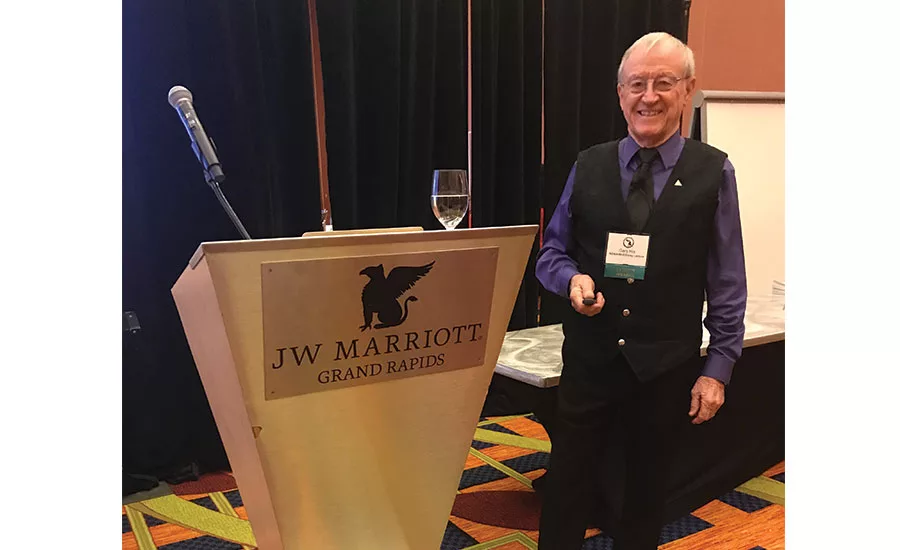
The NGWA’s McEllhiney Lecture series has taken Hix all over the U.S., an experience he says taught him even more than he taught his audiences.
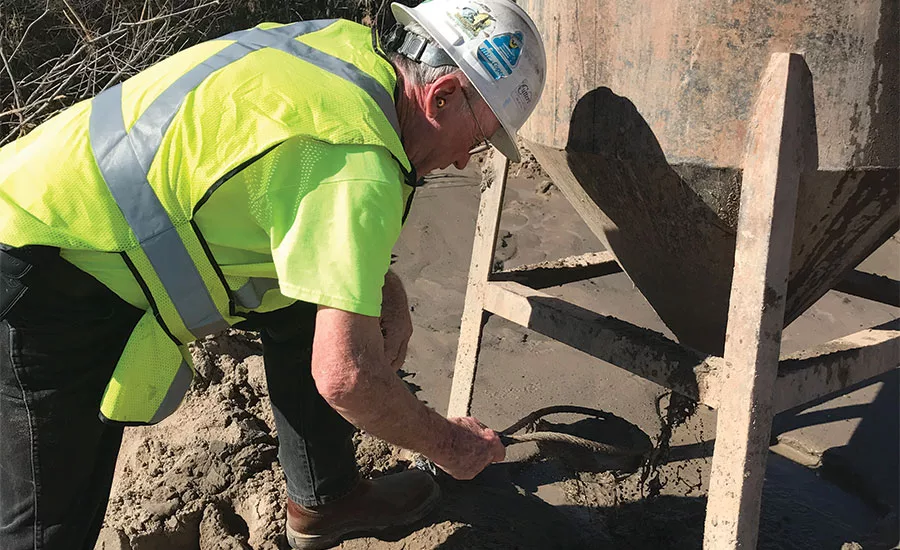
Hix takes a sample from a domestic system.
Source: Gary L. Hix photos
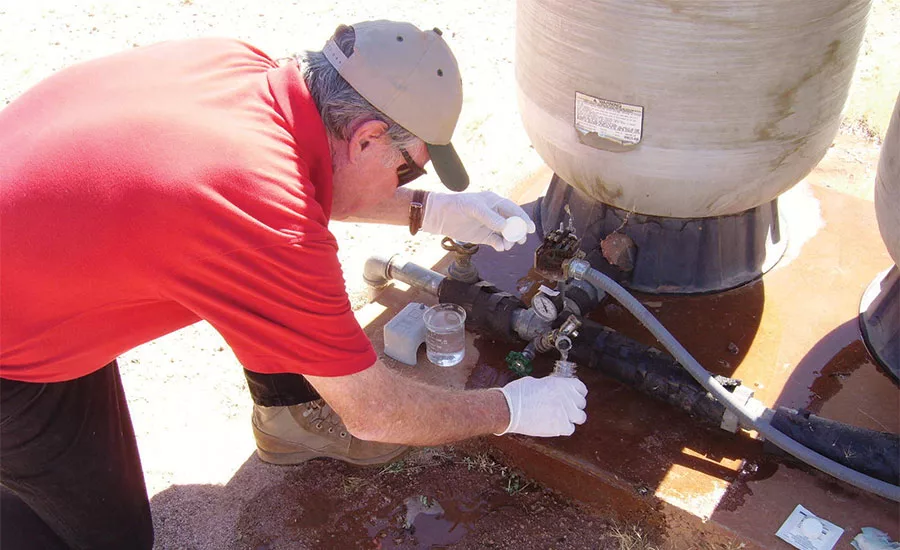
Hix has done a lot of writing and consulting regarding the intersection of water wells and real estate. He says the drilling industry can benefit from seeing how other industries, like food, medical, even aerospace, tackle their issues.
Source: Gary L. Hix photos
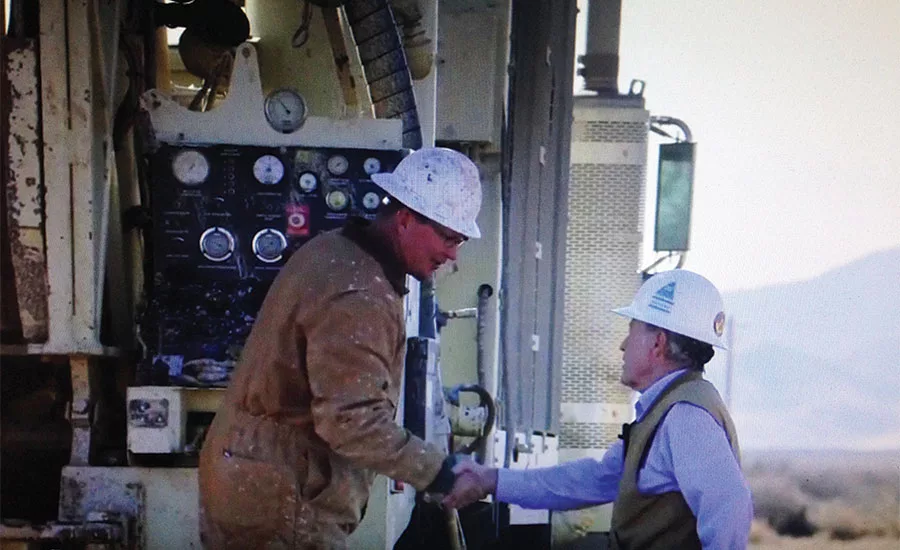
In his work as a consultant, and his capacity as a McEllhiney Lecturer, Hix has met drillers all over the United States.
Source: Gary L. Hix photos
Recently, I had the excellent opportunity to interview Gary L. Hix, CWD/Pl, RG, CPG, and the 2019 McEllhiney Lecturer. Hix is a water well consultant and owner of In2Wells LLC. He worked mostly as an Arizona water well drilling and pump contractor from 1986 to 2007. He has authored more than 50 articles on subjects related to well drilling and pump installations.
Hix is also an instructor on topics related to water wells and well drilling methods on the staff for Hogan School of Real Estate and the Bureau of Land Management. He holds a bachelor of science in geology from the University of Arizona, and a master of arts in business management from the University of Phoenix.
The day that Hix and I spoke, he was watching a Foremost DR24 on a water well project in California. I started by thanking him for doing the McEllhiney Lecture series for the National Ground Water Association (NGWA), because every time I attend one of these lectures, I grow as a professional in our industry. Then, we got right to the interview, which here is edited for space and clarity.
Q. Good morning, Gary. How are you doing?
A. I am living the dream and dreaming to keep living it!
Q. What did you expect when you traveled to different states to give your lecture?
A. You know, I thought I would go from state to state as the teacher. But, as I got to each state and started talking to people, I found myself asking more questions and learning more from them than I believed I was giving to them. It was interesting how different states work and deal with the same things that I do in my state of Arizona.
Q. Paint us a picture of the ideal domestic water well. How is it planned out and executed for the customer?
A. First, it needs to be appropriately permitted! Next, they need to use the right equipment for the location. I am a geologist. I like to see that if you’re in the consolidated rock, you are using air rotary, and if you are in alluvial sands and gravels, you can go to mud. Beyond method, I am always in favor of setting surface casing, be it temporary or permanent surface casing cemented in before drilling the open borehole. I have seen too many rig catastrophes from subsidence of an open borehole. Also, if you encounter artesian, you have no way to control the hole. It’s essential to make the well deep enough to give the customer a 40-year water supply or more. Don’t just drill 50 feet into the water table and stop, because you don’t know if the water will maintain that level in the years to come. Then develop and sanitize the well properly before installing the pump to ensure a productive, safe well for the customer. It’s important to give the customer a first-class product.
Q. With your ideal water well plan, what are some common errors that you encounter?
A. Often, I am asked to represent the property owner on poorly constructed wells. One significant error I see is not installing a proper sanitary seal around the outside of the casing. I have investigated many wells for real estate inspection and homeowners where I would dig around the well and find only two to three feet of cement, not 20 feet. The other major error is when a driller rushes drilling a well using too much pulldown, and the borehole ends up crooked or deviated. Then the first time the well is serviced, there are issues pulling the pump.
Q. What is your number one favorite advice to give to contractors?
A. There are riches in niches. The market is ever-changing, and the great advice is to listen to where the market is going and adapt your equipment, business, website to fit the needs of the market. Don’t be too big to fit all markets, but specialize in your niches. Ten years ago, we were writing about diversification because there was hardly any drilling going on. Today there is work, and I say specialize, be lean and mean, and go after the things in your expertise and maximize.
Q. In your career, what has been the biggest change in the industry?
A. Technology for drilling wells and testing wells. The modernization of the drilling equipment has been fantastic — the automation of the rigs for safe loading and pipe handling. I love to go to the shows to see what the next technology is coming out. Rigs these days can operate with fewer people, minimizing the risk.
“There are riches in niches ... specialize, be lean and mean, and go after the things in your expertise and maximize.”
Q. What would you tell a young driller entering this industry? What advice would you give him or her?
A. I just did. I met a young man — 21 years old — that has been working in the industry for the past three weeks. I told him this is a great career that is very rewarding, and we need young men and women. Each state I visited this year, the big topic was how to find good help. I found a very good career in this industry, working as a hydrogeologist and a contractor.
Q. How did you enter the industry?
A. I started as a mineral exploration geologist on coring drilling rigs. That quickly turned into exploratory skinny hole reverse circulation. Next, I moved on to large-diameter reverse circulation, and the rest is history.
Q. Let’s talk reverse circulation for large-capacity water wells. Many wells are specified to utilize reverse circulation, right?
A. When I worked for Tucson Water, we would drill RC exploratory test holes and large-diameter RC holes for municipal water wells 16-inch diameter to 1,000 feet. The wells were Johnson screen equipped, fully gravel packed and cleaned up right away. The wells were very efficient, with the RC drilling method having little impact on the formation. The other major benefit over rotary, and what makes RC my favorite method as a geologist, is that RC gave me a far superior sample to evaluate.
Q. As a geologist, what advice would you give a young geologist or hydrogeologist entering the field so they can get the most out of working with a driller to ensure the best downhole sample possible?
A. I was an intern for a year and a half during college for Tucson Water. After college, I took on training the interns we had to work for us. We would talk about how to approach a driller, how to work safely on a jobsite, and even the importance of using a cutting torch for fabrication. We had our sample splitter box that I helped create, and we would mount that to the contractor’s rig that we hired. I would tell all new hires to be careful when approaching a driller, if he has his hands on the controls don’t interrupt what he is doing. If you need information, wait until he’s done with his task so he can concentrate on keeping his men safe at their duties. The other major lesson was to learn the sounds of the drilling rig and always watch the speed of the head going down.
Q. I know you have another presentation called “Drilling Disasters and What We Learn from them.” Can you tell me about some life lessons from drilling disasters?
A. Yes. I monitor drilling rig accidents across the country, and I believe more people are harmed or killed when the drill rig is not drilling than when it is drilling. I know of two or three incidents of towers coming down when being raised or lowered. I saw an event on a big RC rig where the mast came crashing down because one of the hydraulic cylinders failed, and it caught several people off guard. So, we implemented a rule that we blow a big air horn when we raise and lower the mast. That sound gets everyone assembled and paying attention with everyone facing the rig while the mast is coming up or down, so no one is caught off guard. Sometimes, it’s the visitor onsite that doesn’t know all the inner workings of the job that we need to guide. I like to make sure they understand what is going on, and they are operating safely.
Q. You wrote a book (Domestic Water Wells in Arizona: A Guide for Realtors and Mortgage Lenders) that helps educate other industries about wells and well drilling. Tell me about that.
A. Well, it is definitely not on the best seller list. However, the book was necessary for my niche market of inspections for the sale and transfer of private water wells. The book was written to help educate the real estate market so that owners would understand the well on their property and the value of those wells. I worked very hard to develop my niche market in private wells that then jumped into some huge commercial ranches with many wells needing to be inspected.
Q. How did you transition from contractor to consultant?
A. When I sold my pump business, I took a year and a half to plan it. I used a commercial broker and set everything in place to sell and make the proper transition. I knew I wanted to be a consultant, which was just me, and it was building bigger and bigger.
Q. Did you think you needed to sell your company to become a consultant?
A. No, but I didn’t have an heir to pass the business down to, which is a big problem throughout our industry. The options available to young professionals today are very vast.
Q. How do companies continue if they don’t have a family to pass on to?
A. If they don’t have an heir and they have a good business on the books, there is an option to sell. They need to build their business and become the very best in their area. Promote your business and obtain a reliable market share. Good drilling companies need leaders who have taken a class in business management and personnel management. Because our customers today are millennials and so are their employees.
Q. How can you lead the company and be the head driller?
A. I don’t have a cute phrase to define this one, but get off the rig and run your business.
Q. What do you hope an attendee will walk away with from your lecture?
A. One of my priorities that I want everyone to learn is serving private well owners’ needs. They need education about their well and more knowledge when they go into having one drilled. I teach classes to homeowners through the University of Arizona. I will always be an advocate for the right to have private water wells.
Q. Do you believe that if water well drilling companies focused more on customer education, we could value wells at a higher price?
A. Yes. That’s the thing about better selling. I teach in my lecture that the drilling company needs to get feedback from the customer when the well is complete. You can’t check into a hotel or get a cup of coffee with being asked to rate the service, so why don’t we do that?
Q. You did a YouTube video where you spoke about how a water well is hard to see the finished product. Tell me about that.
A. I used this same quote often, even today, with our site visitor: “It’s like building a ship in a bottle, but the bottle is opaque.” Every well should be a design-build; therefore, thinking of it as a single lump sum figure is a poor way to do business.
Q. After this year’s lecture series is complete, what lecture can we expect from you next?
A. I am overseeing the rehab of a well on the Colorado River back where my home is upriver. I believe the secret to understanding the well performance loss is at the microbial level. I think that there are people in the food industry, medical, space that we can learn from. If we can apply some of the techniques that other industries are using, we could do a better job and extend the life of wells. I read as much as possible to search out new methods. The space industry is using an electrical charge to deactivate microbes; these types of methods could be used in wells.
Q. Do you have any parting words?
For more insights into the water well industry, click here!
A. It has been an honor to do the NGWA McEllhiney Lecture series. I will continue to be an advocate for the needs of private well owners in all states. Now that I have traveled to so many states and have seen the full range of rules and regulations from state to state, I would like to take advantage of that information and summarize each state’s rules in a 51 state database for other states to share in developing their rule and regulation changes. My interests in the laws and regulations regarding private water wells in each state begin with who owns the groundwater and extend down to how wells are regulated during the sale and transfer or real estate.
Looking for a reprint of this article?
From high-res PDFs to custom plaques, order your copy today!






